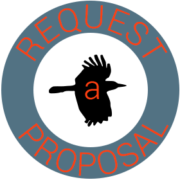Do You Know Why? Define Your Company Purpose
Raison d’être : the thing that is most important to someone or something : the reason for which a person or organization exists.

What’s Yours?
Have you ever come up against a giant brick wall that you can’t seem to scale or even to walk slowly and cautiously around? It’s just there. Staring you in the face, mocking; one brick at a time saying “What are you doing here and why are you standing still staring at me like that?” It’s that classic moment so many of us have encountered – we feel we have lost our way and we’re not sure where we are or where we’re going.
That’s our “Why” cajoling us to pay attention to it; wanting to reunite us with our misplaced purpose. It’s begging for our attention. It can happen to even the most diligent among us: within a business, for companies and organizations and it can happen in our own professional and personal life. We lose sight sometimes.
Why are we doing what we’re doing?
Why do we bother and what keeps us going? What’s our purpose? What’s our company purpose?
Simply… “Why?”
Defining our ‘Why’ isn’t a new notion, but one worthy of revisiting as a regular practice. Simon Sinek, author of the book “Start With Why” (and the concept of “The Golden Circle”) popularized the idea and focused the microscope on it in his 2009 TED talk (the popular, third most viewed ever, TED talk).
Digging for an organization’s deeper purpose and reasons for existence was concretely foregrounded as early as 1960 in a speech given to employees by David Packard.
“I want to discuss why a company exists in the first place. In other words, why are we here? I think many people assume, wrongly, that a company exists simply to make money. While this is an important result of a company’s existence, we have to go deeper and find the real reasons for our being.”
And in 1996, James C. Collins and Jerry I. Porras, in Building Your Company’s Vision, “Harvard Business Review”, defined Core Values as “…the essential and enduring tenets of an organization. A small set of timeless guiding principles…”
And Core Purpose this way:
“…the second part of core ideology, is the organization’s reason for being. An effective purpose reflects people’s idealistic motivations for doing the company’s work. It doesn’t just describe the organization’s output or target customers; it captures the soul of the organization.”
Take a look at the following “why’s” that they used to illustrate their point:
3M: To solve unsolved problems innovatively
Cargill: To improve the standard of living around the world
Fannie Mae: To strengthen the social fabric by continually democratizing home ownership
Hewlett-Packard: To make technical contributions for the advancement and welfare of humanity
Lost Arrow Corporation: To be a role model and a tool for social change
Pacific Theatres: To provide a place for people to flourish and to enhance the community
Mary Kay Cosmetics: To give unlimited opportunity to women
McKinsey & Company: To help leading corporations and governments be more successful
Merck: To preserve and improve human life
Nike: To experience the emotion of competition, winning, and crushing competitors
Sony: To experience the joy of advancing and applying technology for the benefit of the public
Telecare Corporation: To help people with mental impairments realize their full potential
Wal-Mart: To give ordinary folk the chance to buy the same things as rich people
Walt Disney: To make people happy
Ask Yourself
Collins and Porras suggest that a powerful method for articulating your “why” is to ask “the five whys”. Begin by describing what you do, what you make, or what you offer, and then ask yourself why that matters to you. As you drill down through the repetition of whys, a gradual uncovering of the most authentic and succinct “why” or purpose will emerge.
There’s really no doubt as to how important this is. It’s equal to Vision and Mission and possibly even more critical because of its energizing contribution to motivation, drive and sustainability. It’s your guiding North Star, a reminder of your dedication and the tie-in to core values and the inner essence and soul of your entity. It organically communicates beyond your own walls.
It’s the inspiration and the charisma that draws in your clients and customers.
What’s The Thing That Gets You To Do What You Do?
There are people who like to say everything happens for a reason. It can be a reassuring way to make sense of chaos in the world and life and it helps them find acceptance for coping with the hurdles. I become uneasy though, with that philosophy. I feel a twinge of discomfort because it’s passively tied to a fateful regard. A passive approach to things there is no need to write off in that casual fashion. Ultimately, it’s dismissive.
I’d rather shift it slightly- reposition the view and then it becomes a [favorite], driving force [of mine]. Finding a way and a reason, before, during or after the fact, to create and value experiences and observations, (especially the ones that are challenging) transforms into a kind of “why”. It creates the “why” for our next action or actions.
Sinek seems to insist we start with the why but why doesn’t always come first. In fact, sometimes why comes in the middle or at the end. It takes command of its position as part of a process, a string of connecting factors that lead us either gently or forcefully to the why. Events pile up and reveal connections, something to cope with, something that was missing, a need, a hole to fill. ….and creates a new beginning. A purpose.
I Like To Ask Why
It’s something I enjoy talking about with clients- one of the routes we take to help us successfully communicate their identity in the work we produce for them. One of the most revealing aspects to learning who they are is seeing the excitement it generates when a company articulates why they do what they do. Often, surprisingly, it hasn’t been discussed explicitly before.
A stunning, moving example of this occurred many years ago at a Design meeting with one of our local hospice and home care organizations around a table of some twelve people- the Director, nurses, social workers, therapists, administrative staff. It was one of the most awe-inspiring days of my life. Every single person in the room not only knew their why and the why of the organization, they knew it intimately and were walking their talk. They were each doing their work with deep purpose. But that kind of depth isn’t a requirement. A ‘why’ need not be awe-inpsiring. It can be simply practical.
Recently, in a first meeting with a prospective client, a technology company, I briefly mentioned the question of why within the context of some other things I was talking about and it took hold. It was one of those magical moments we always seek in conversation. One of the individuals heard the word “why” and asked to come back to it a bit later in the meeting. What occurred was a very open, lively discussion amongst the four people present who were representing the company. They spoke about what got them up in the morning to come to work, what drives their motivation, why they love working there and what it means to them. They each had a different Why. Their personal whys led them to some initial consensus on the Company Why and it was clear they would continue making a commitment to exploring their corporate why whether we are the vendor they eventually contract with or not.
I witnessed a kind of waking up in those moments. They took the question and ran with it in a way that’s unusual for an initial meeting not intended for a deep dive. A spark of excitement about “why” with an understanding of how far even just the process of redesigning their website could take them and the benefits it could produce internally within the company. Transformative benefits. How it could affect the company culture.
Interestingly, I had already been working on this article. My “why” radar was tuned in, turned on and so their spontaneous interest in the question was an example of beautiful synchronicity. And a confirmation of our own why, my own why.
Fat Eyes Web Development: To catalyze and support individuals, businesses and organizations in their quest to recognize themselves and articulate their identity through language and visual means on the web [and off-web too].
Questions You Can Ask
- Do you know why?
- Why did you start your business?
- Why does your business do what it does?
- When did the first seeds of your idea occur to you and how?
- What was missing that you were hoping to supply or to replenish?
- Why do you go to work every day?
- And if you’re an employee, why did you choose to work for the company where you are?
So, Again, What’s Yours?
Our Why can be hard to put into words because it tends to be attached to feelings more than necessarily a pragmatic way of thinking. But..
It may require some deeper investigation and some questioning, but you’ll locate it if you spend the time.
Mary Kay – (2015) To help women achieve personal grown and financial success
NIKE, Inc. – (2015)- To bring inspiration and innovation to every athlete in the world
Avon – Beauty, innovation, optimism and above all for women
Tom’s shoes – Creating a way to provide shoes, sight, water and safer birth
services to people in need.
Hospice of Santa Barbara – To care for anyone experiencing the impact of life-threatening illness or grieving the death of a loved one.
IDEO – To solve poverty related challenges (Forbes)
Johnson & Johnson – To advance the health and well-being of people
IKEA – To create a better everyday life for the many people
Life Is Good – Spreading the power of optimism
Scholarship Foundation of Santa Barbara – To create opportunity and transform lives
Hutton Parker Foundation – To support community based non-profit organizations
(all direct quotes)
SUBSCRIBE & Receive Blog Notifications Of New Posts:
* Don’t miss any of our blog posts! Subscribe at the top right of this page.
Google Plus Post Notifications:
* Would you like to be included in my Google Plus Notification Circle?
If you would, please visit the invitation and let me know in the comments with a +mention of my name. Thanks!
Pre-remix image iStockPhoto
We recently installed Google+ Comments. If you’d like to leave a COMMENT- PLEASE CHOOSE: ’W’ for our WordPress commenting system,’G+’ for Google+, or ‘F’ for Facebook





